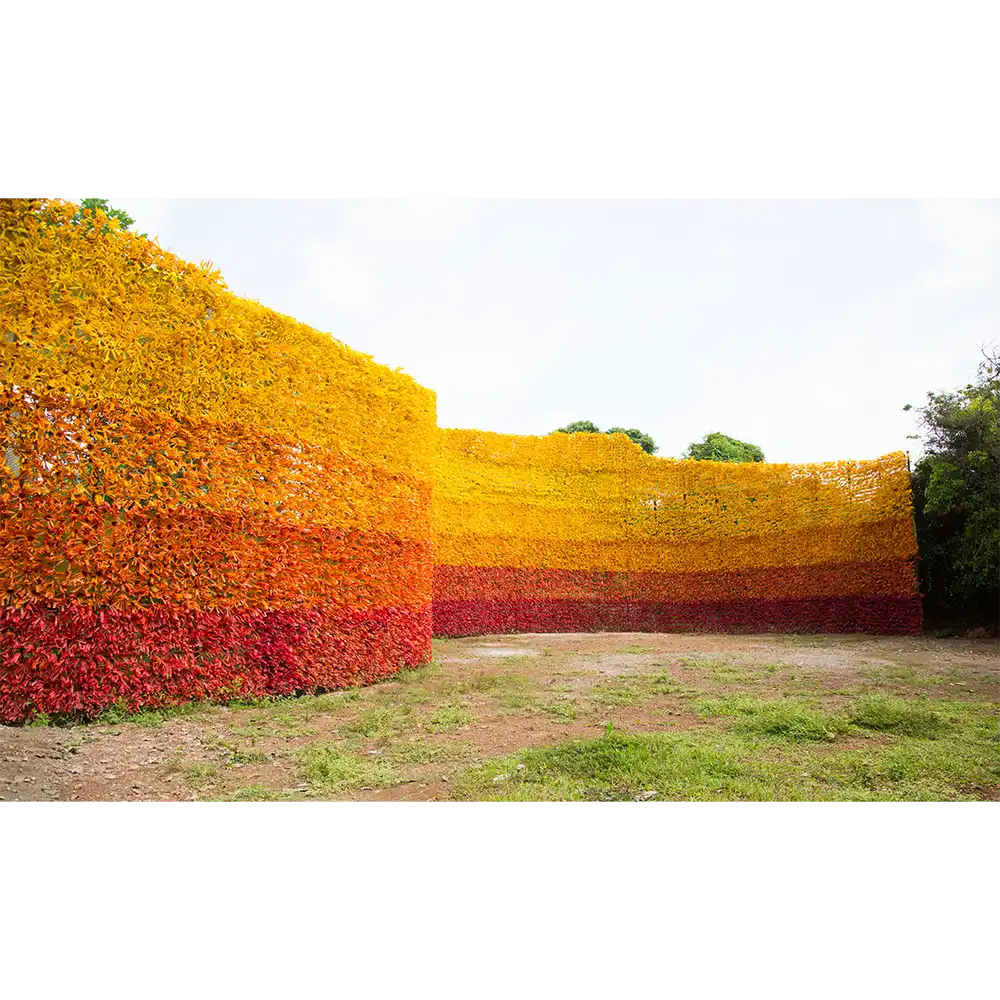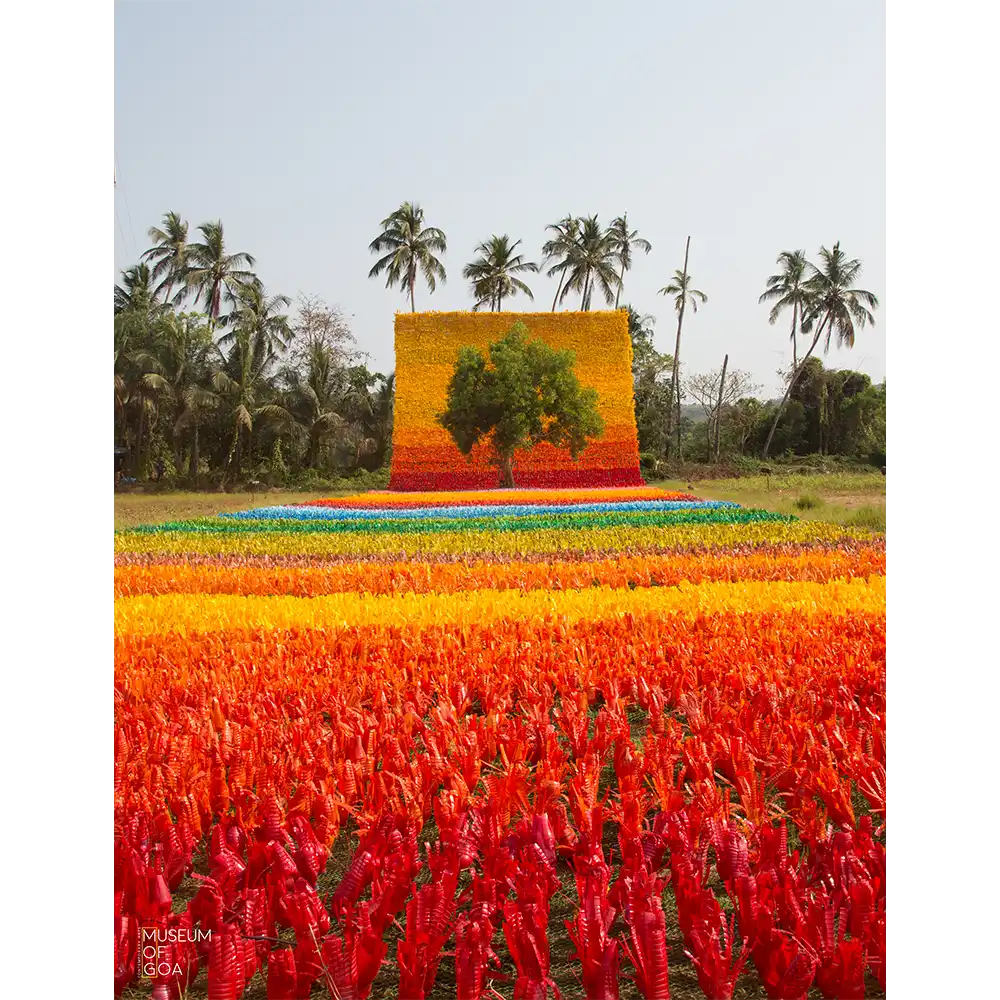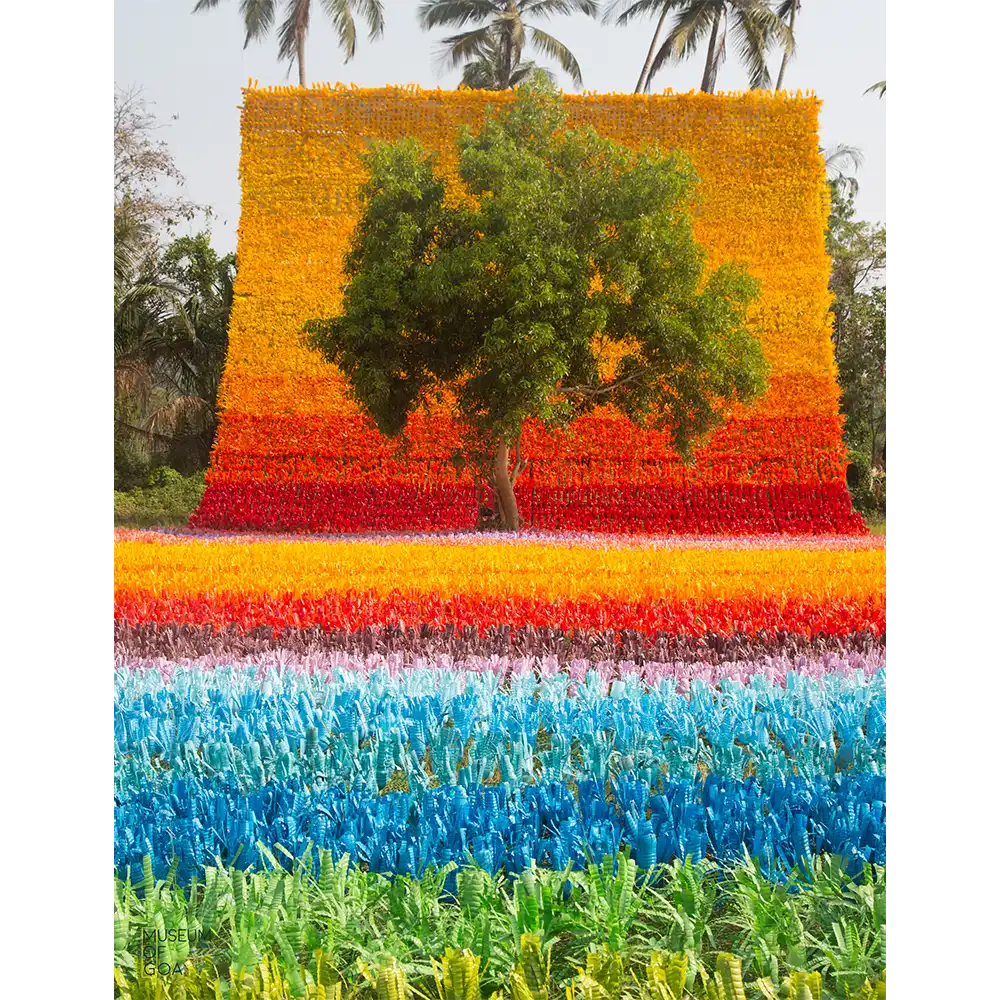Installations Stills
Subodh Kerkar planted sunflower seeds in his field, some time ago, with the objective of creating a large installation of the Sun with the flowers. Later, the flowers were harvested, with the objective in mind. While driving to Shiroda beach with the harvest, he changed his mind. He thought, “The moon receives its light from the Sun. Why not create a crescent moon on the beach on Eid day?” When the artist looked at his crescent moon on his drone screen with the waves breaking on the shore, “I had goosebumps!”, he exclaimed. “I felt as if the waves were offering prayers to the moon. The moon after all is the creator of the tides”, he added.
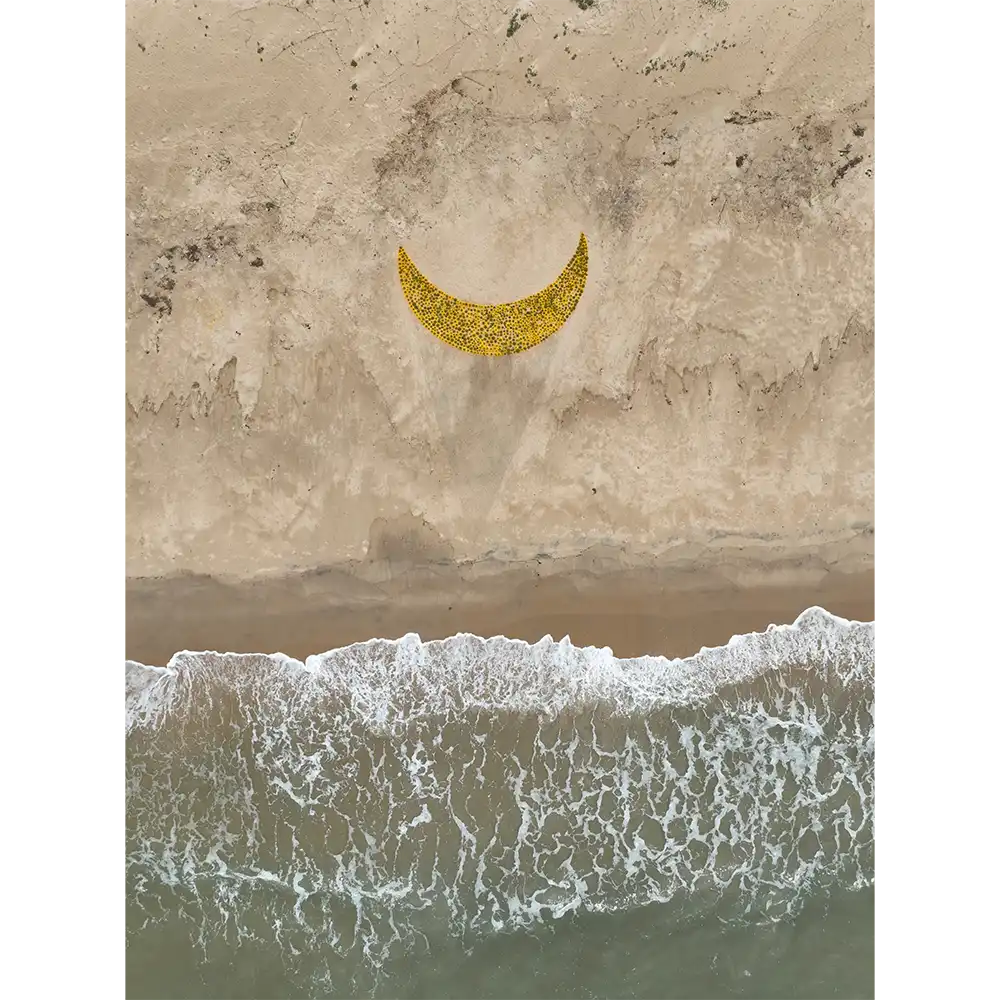
Shells
Children like to collect shells on the beach. The artist has often collected thousands of shells with the help of children. He calls it “harvesting the beach”. Sometimes he collects mussel shells from the fish market. In Goa mussel shells are green on one side, and silvery white on the other. He plants the shells in different compositions on the sand, adding various narratives to his works. One of his favourite works with shells is creating the impression of the ocean with mussel shells. In these works, the ocean is the inspiration, the theme, the medium, as well as the canvas (it is medium because the shells are offered to the artist by the ocean). Subodh has planted mussel shells on many shores of the world, including Korea, Denmark, Germany, Australia and the Gulf countries. He carries some shells from India to other shores.
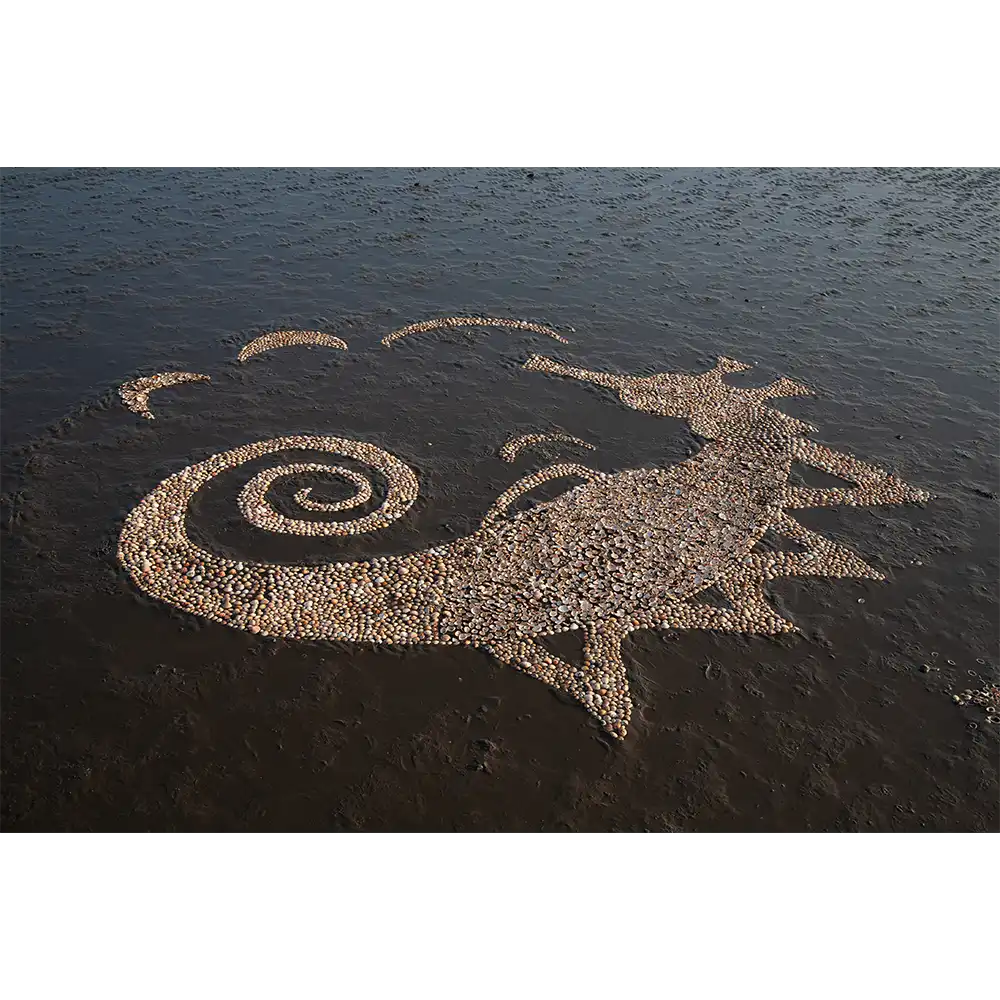
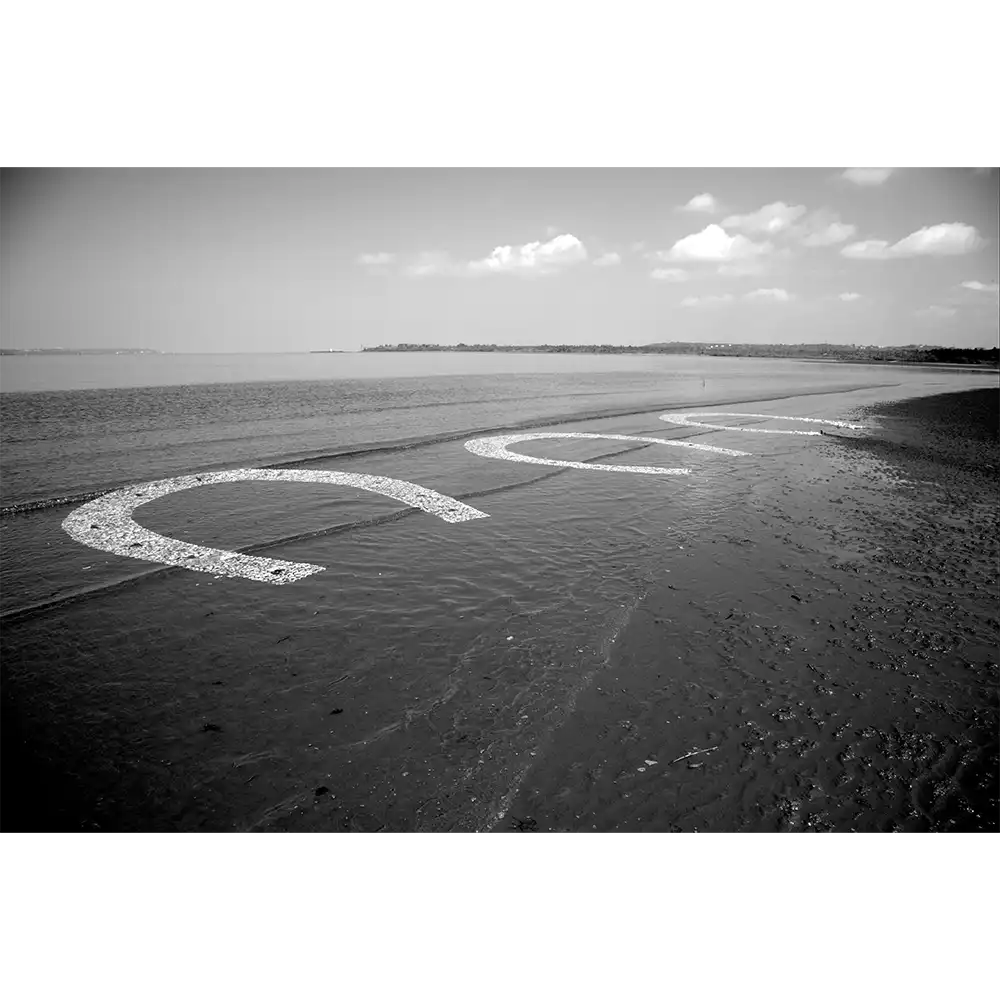
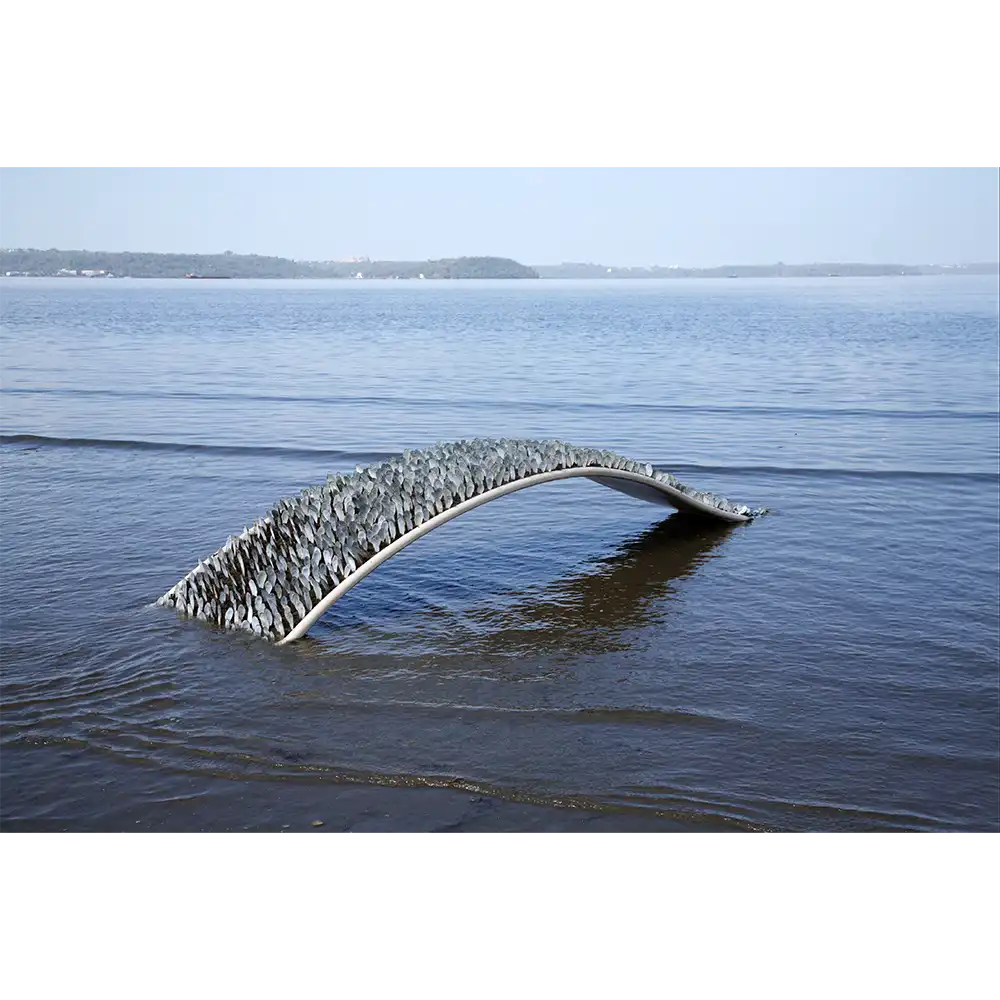
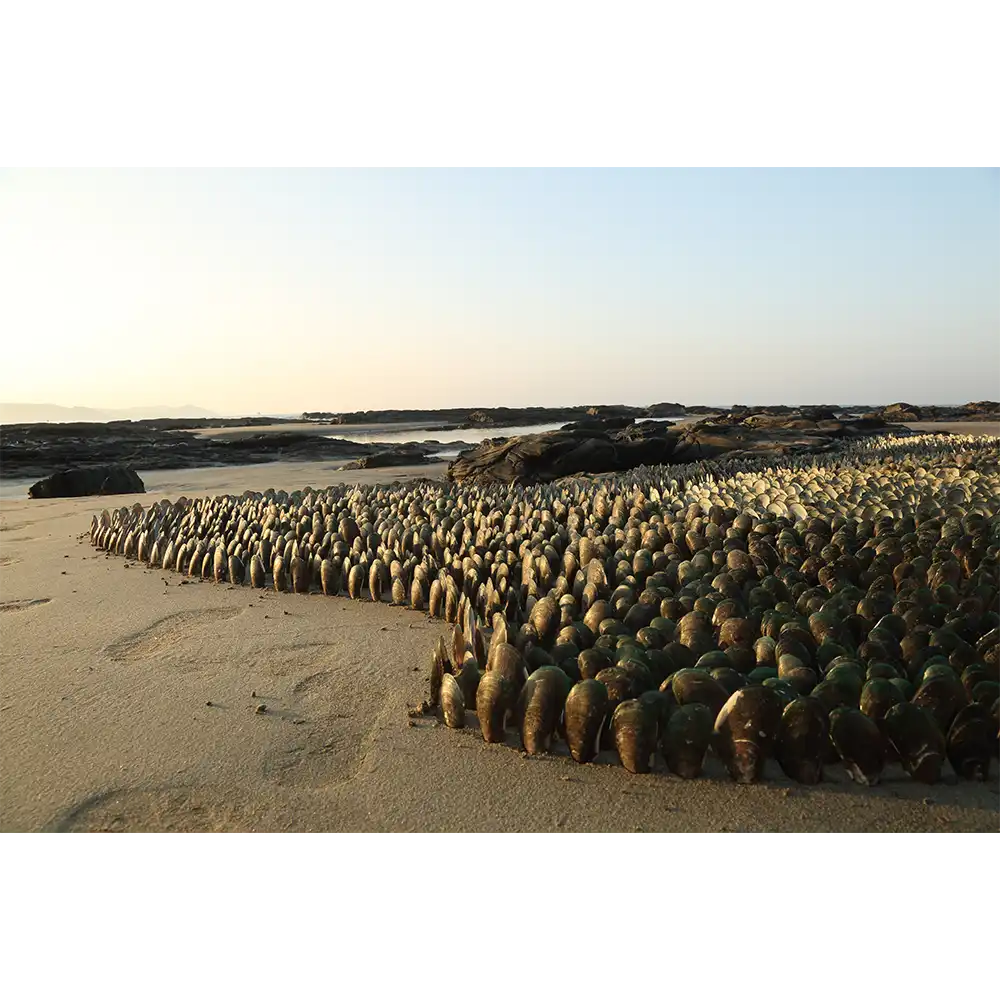
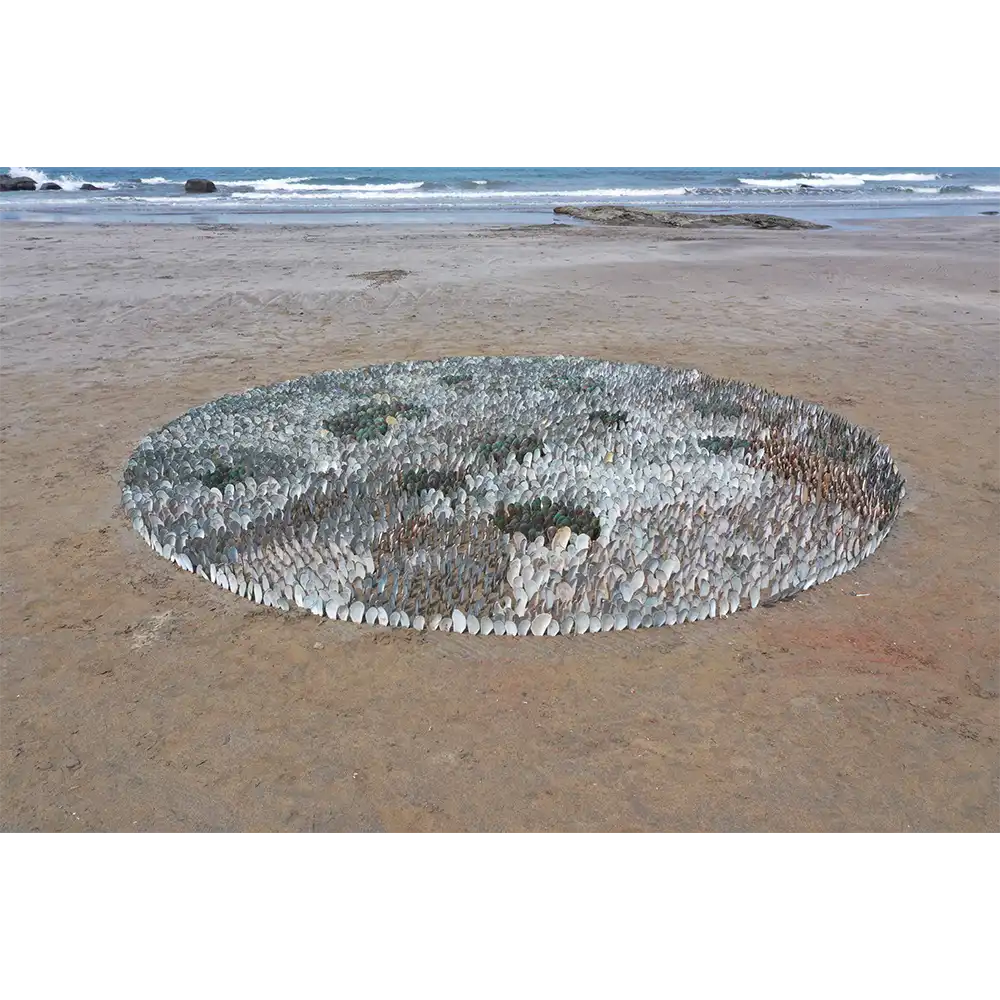
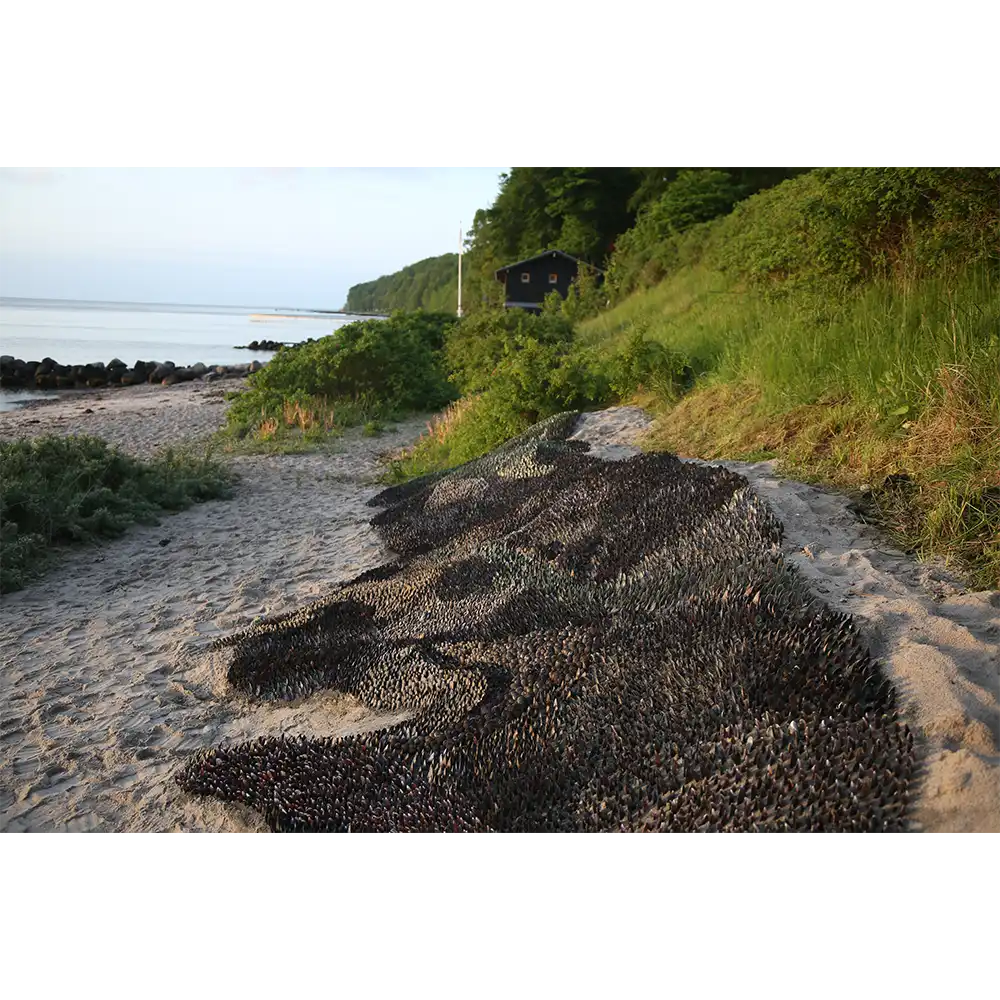

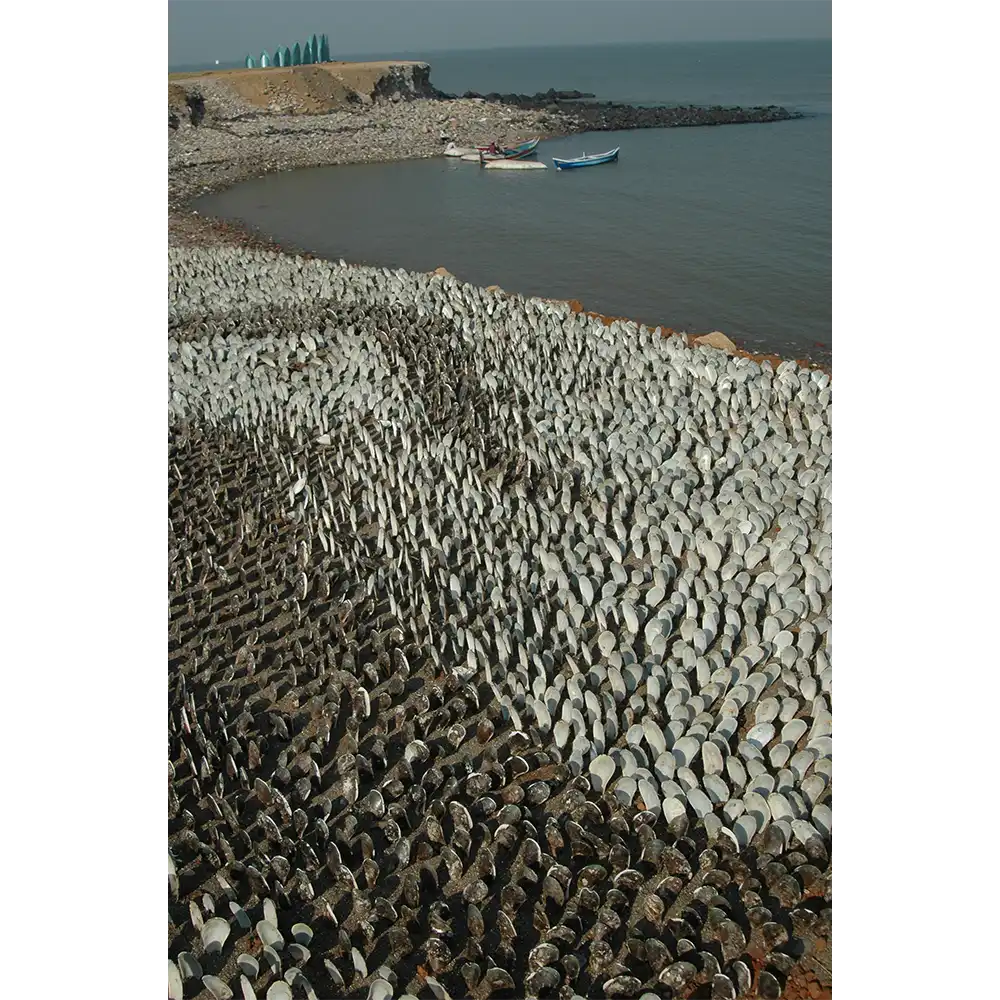
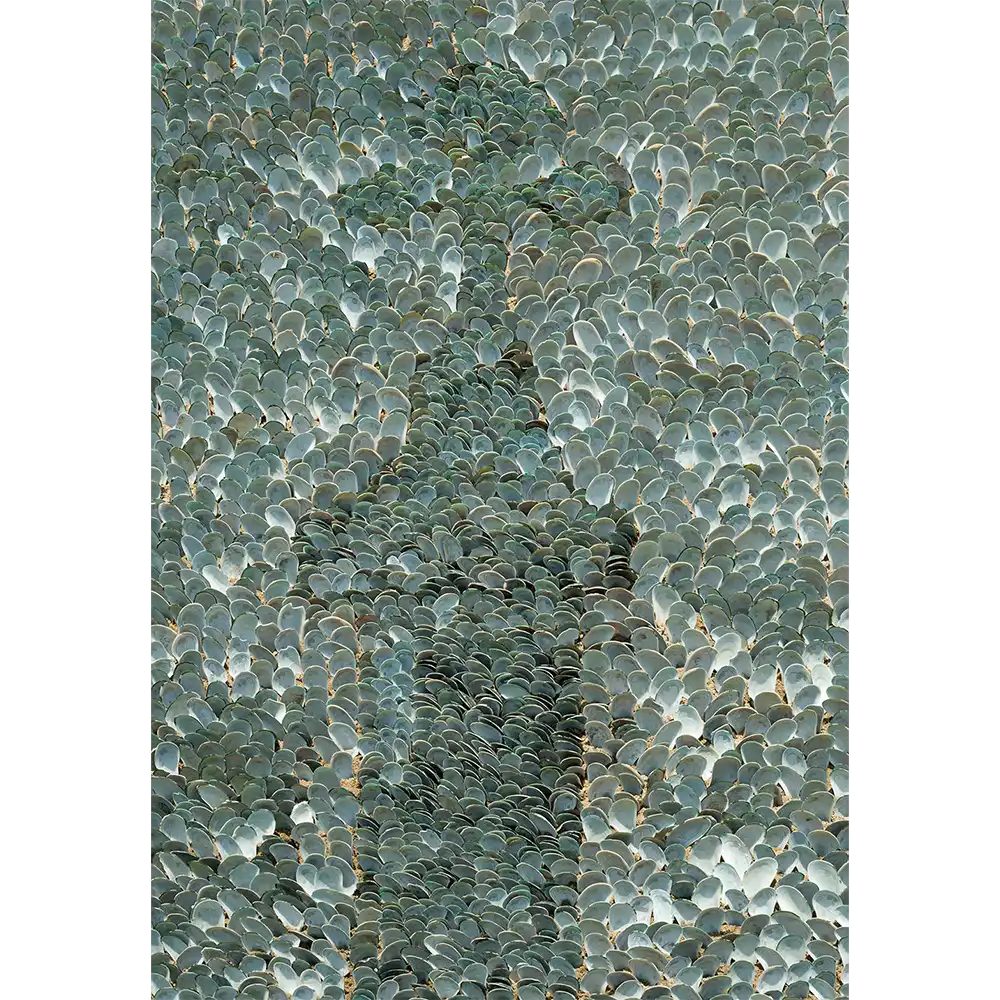
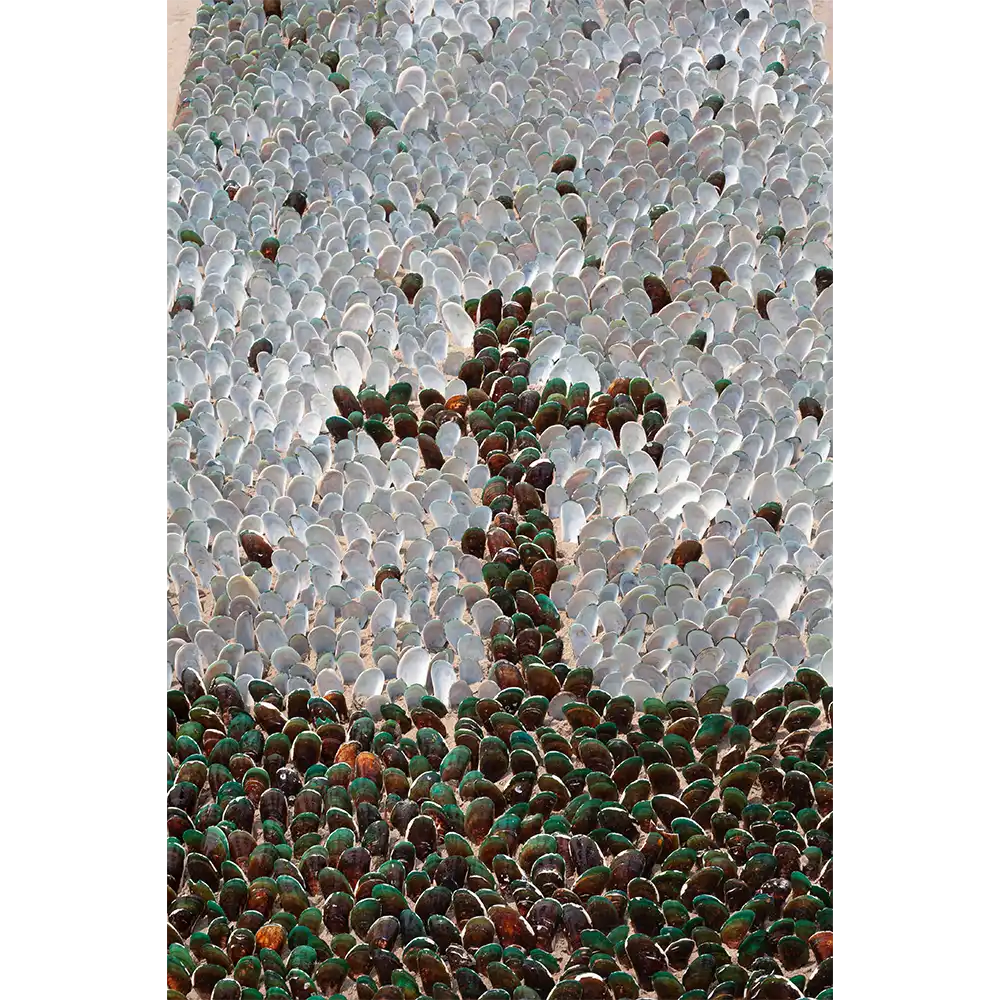
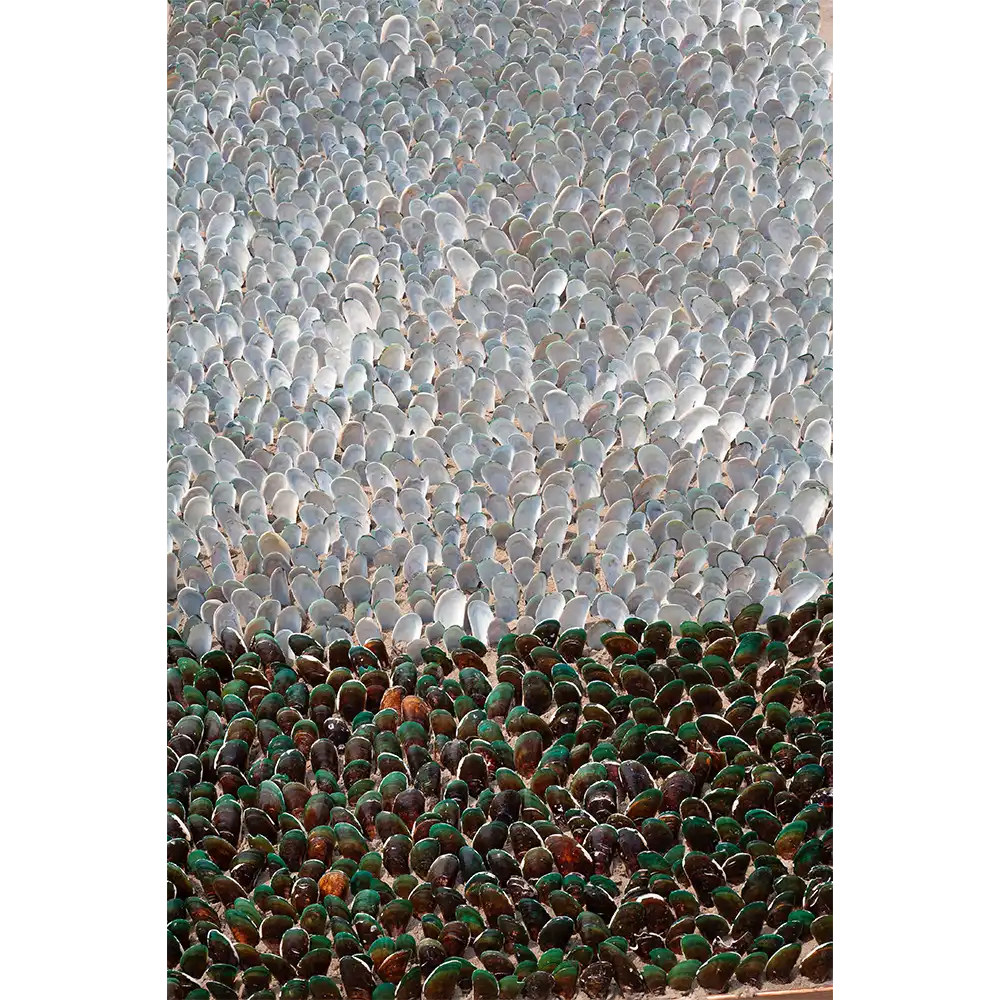
THE MOON AND THE TIDES
‘Gopakapattanam’ or Govapuri was the Kadamba capital from 1030 to 1341 AD, until a natural disaster, likely a tsunami, silted over its port. The harbour then shifted to Ela (present-day Old Goa). Remnants of the old docks remain, and even now, one can walk half a kilometre into the sea at low tide. The gentle tides leave undisturbed shell patterns on the sand. Inspired, the artist collected thousands of shells, arranging them in a five-meter circle during low tide, a tribute to the moon, source of the tides. As the sea rose and swallowed the artwork, it became a symbolic piece titled The Moon and the Tides, reflecting the rise and fall of civilizations.
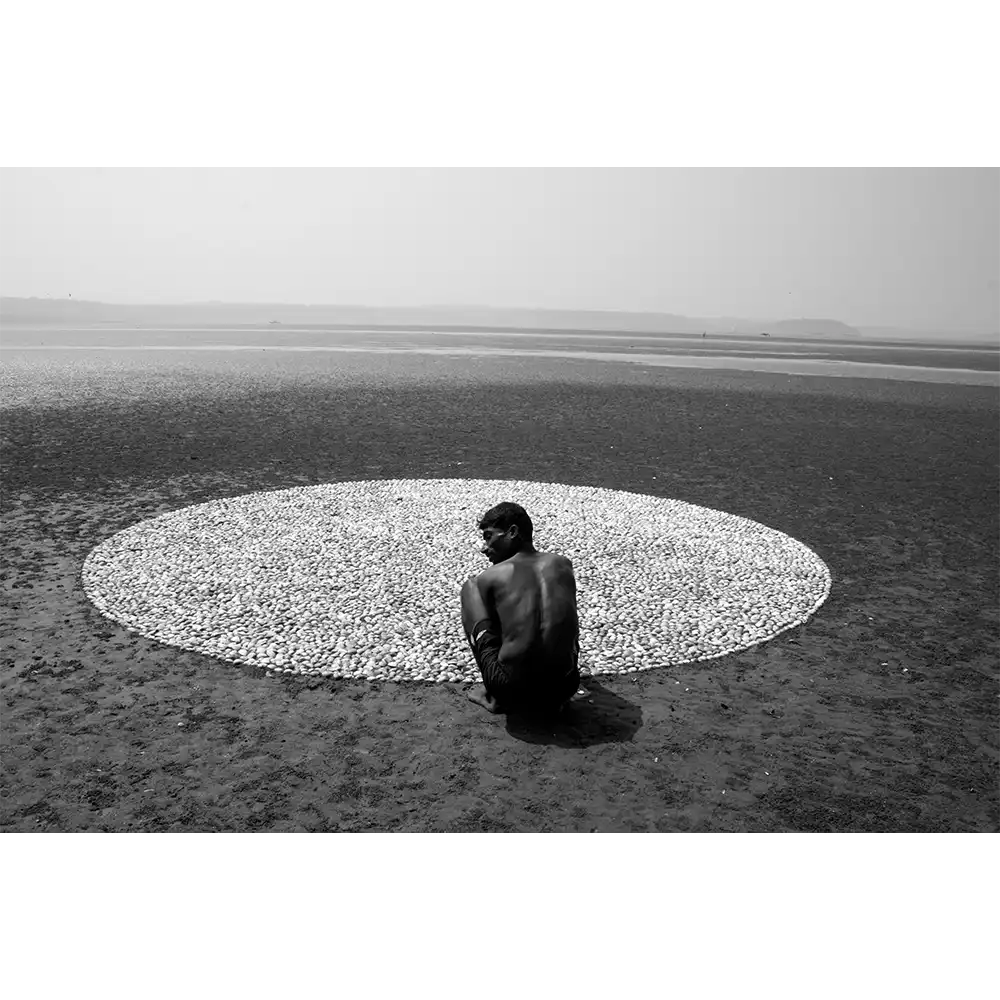
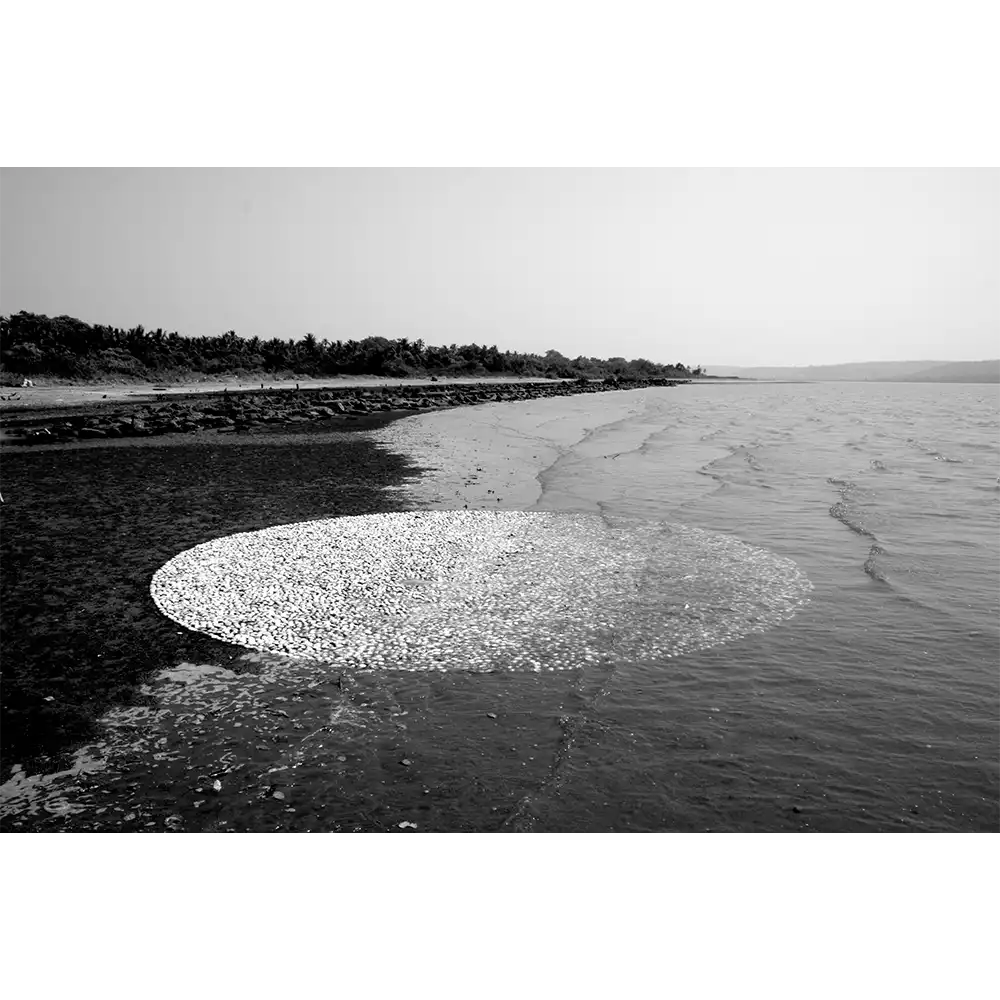

SAND AND LIGHT
Subodh Kerkar had created a copper disc with electrical bulbs fitted behind it for a reception of a hotel. He decided to take the disc to the beach, dug a crater in the sand and placed it on the top of the crater. Electrical connection was brought from a beach shack.
When the electricity was switched on, the artist himself could not believe his eyes. The creation appeared like a new planet. He called it the ‘Tenth Planet’. This work was unplanned and spontaneous. This led to many more installations with sand and light.
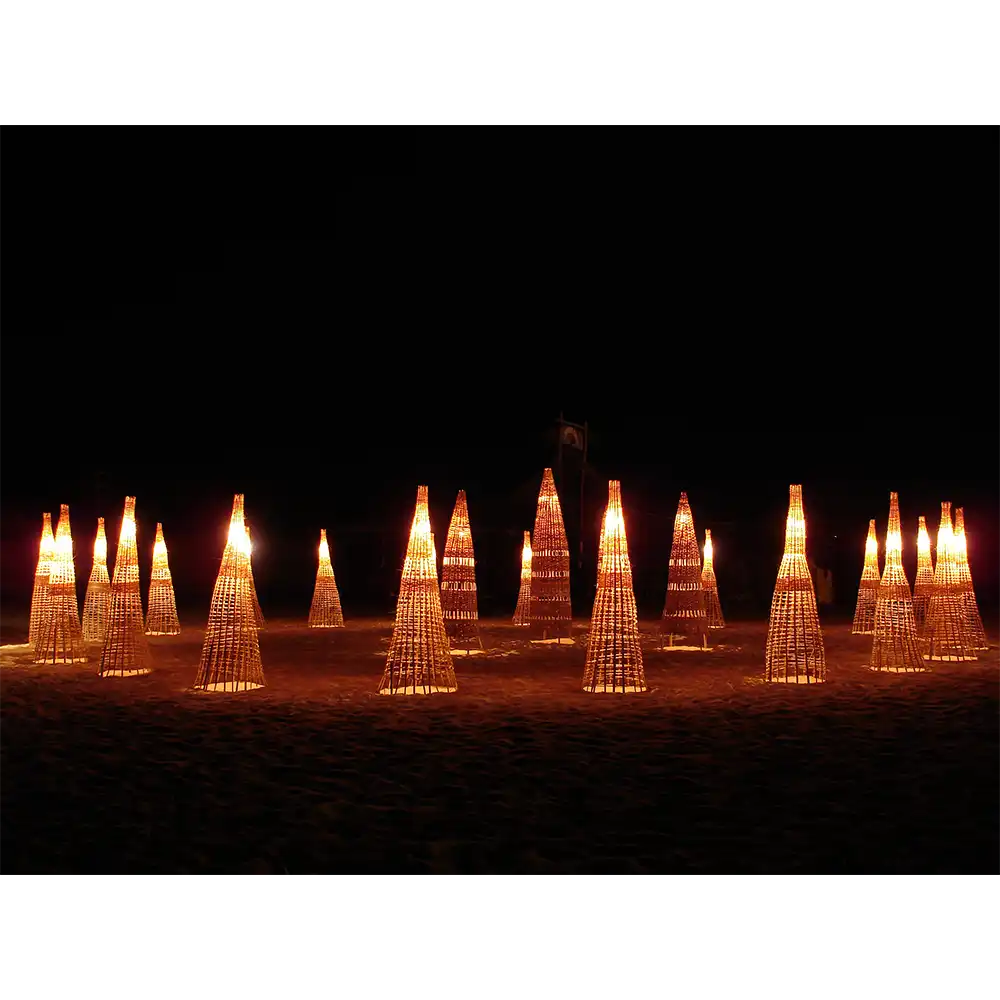
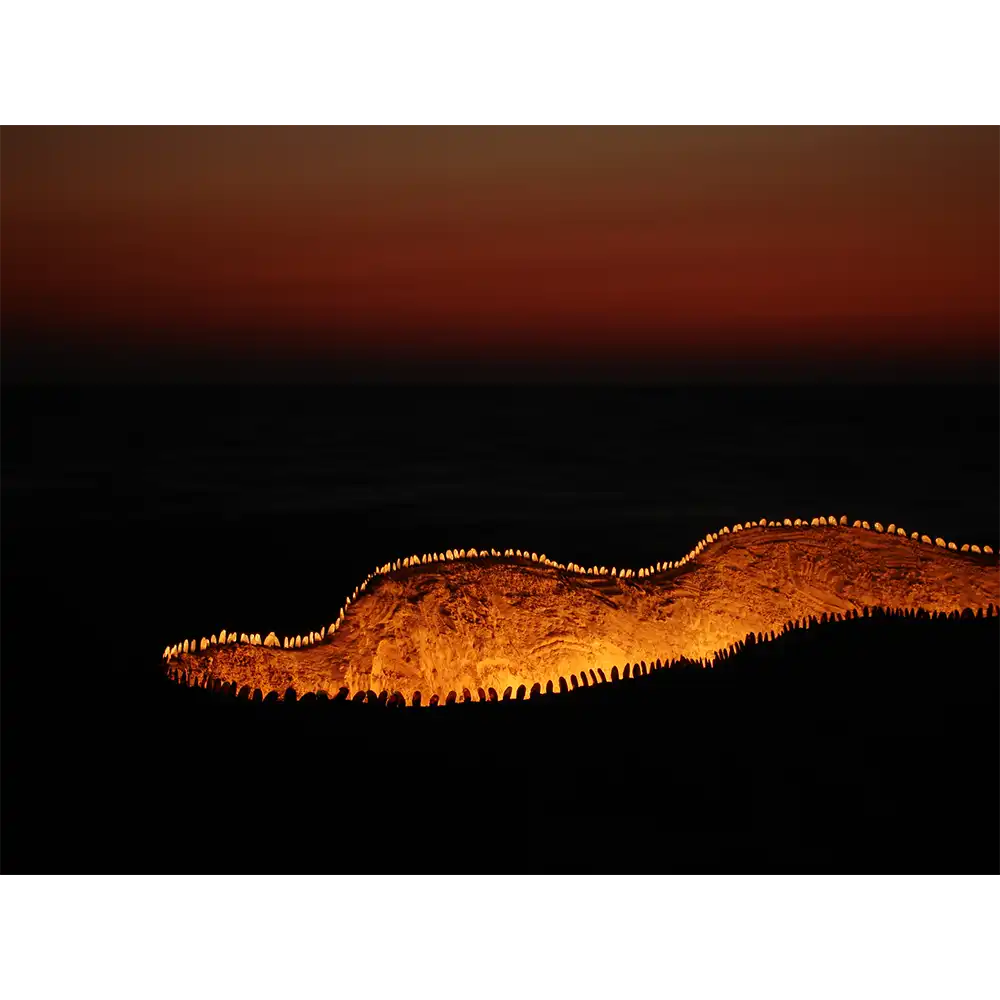
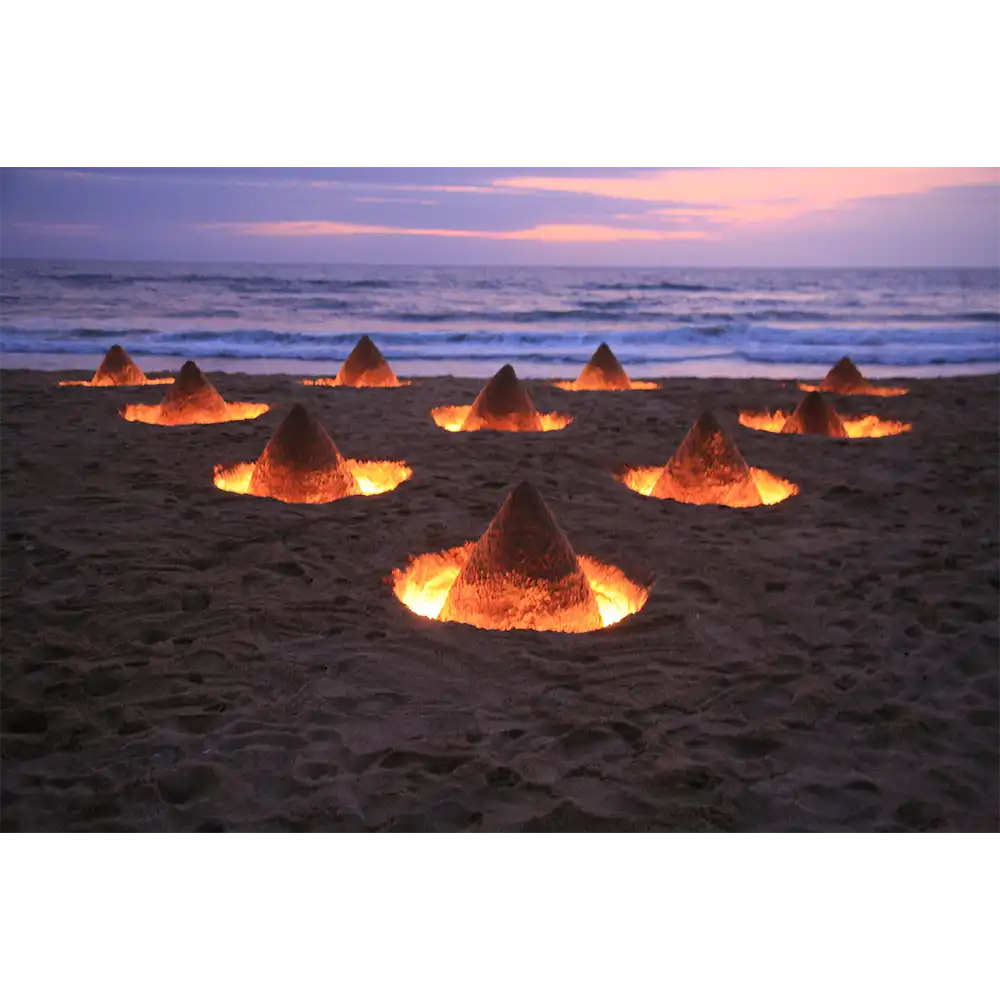
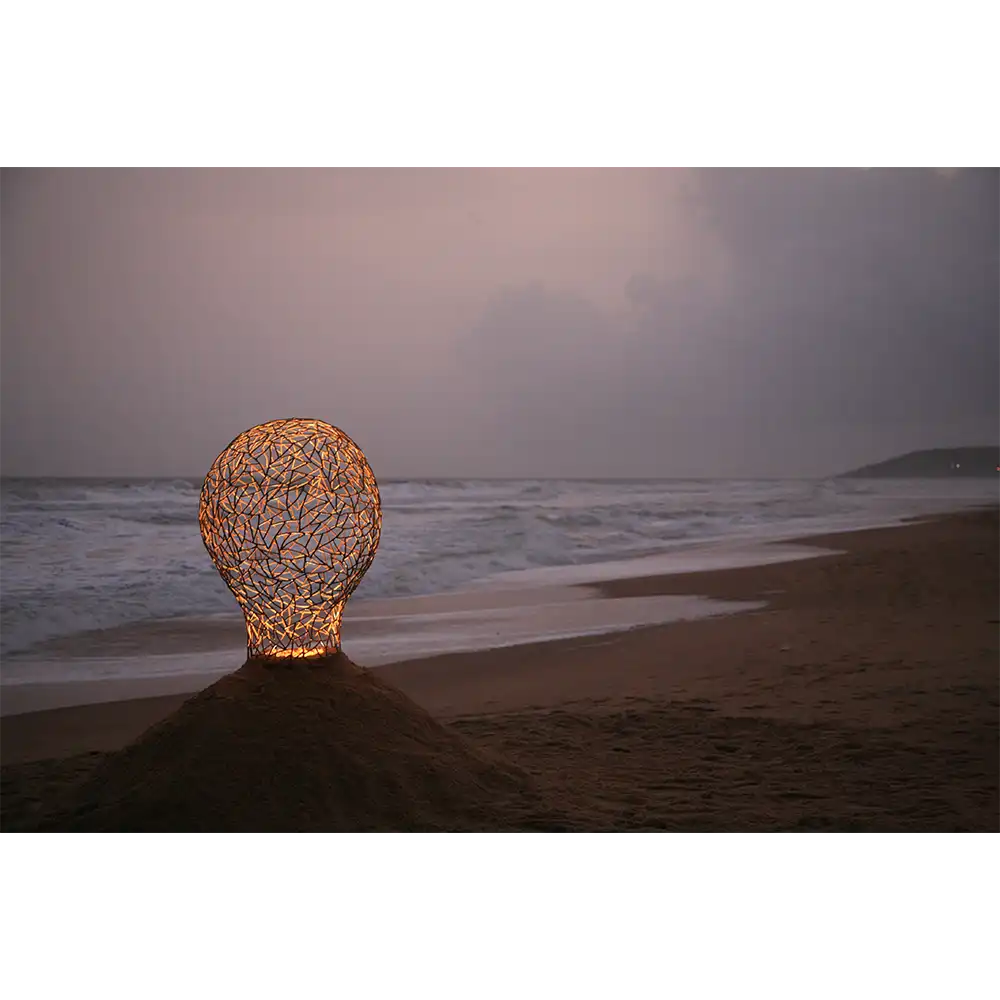
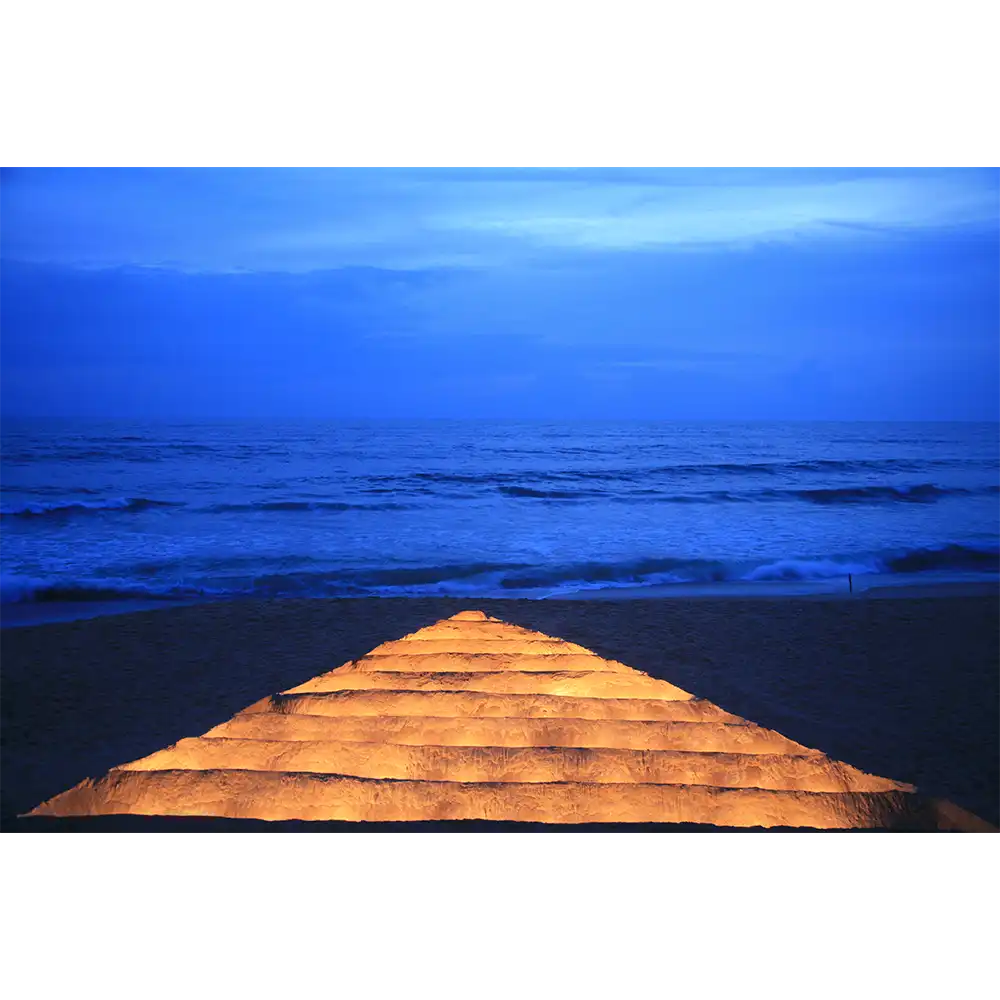
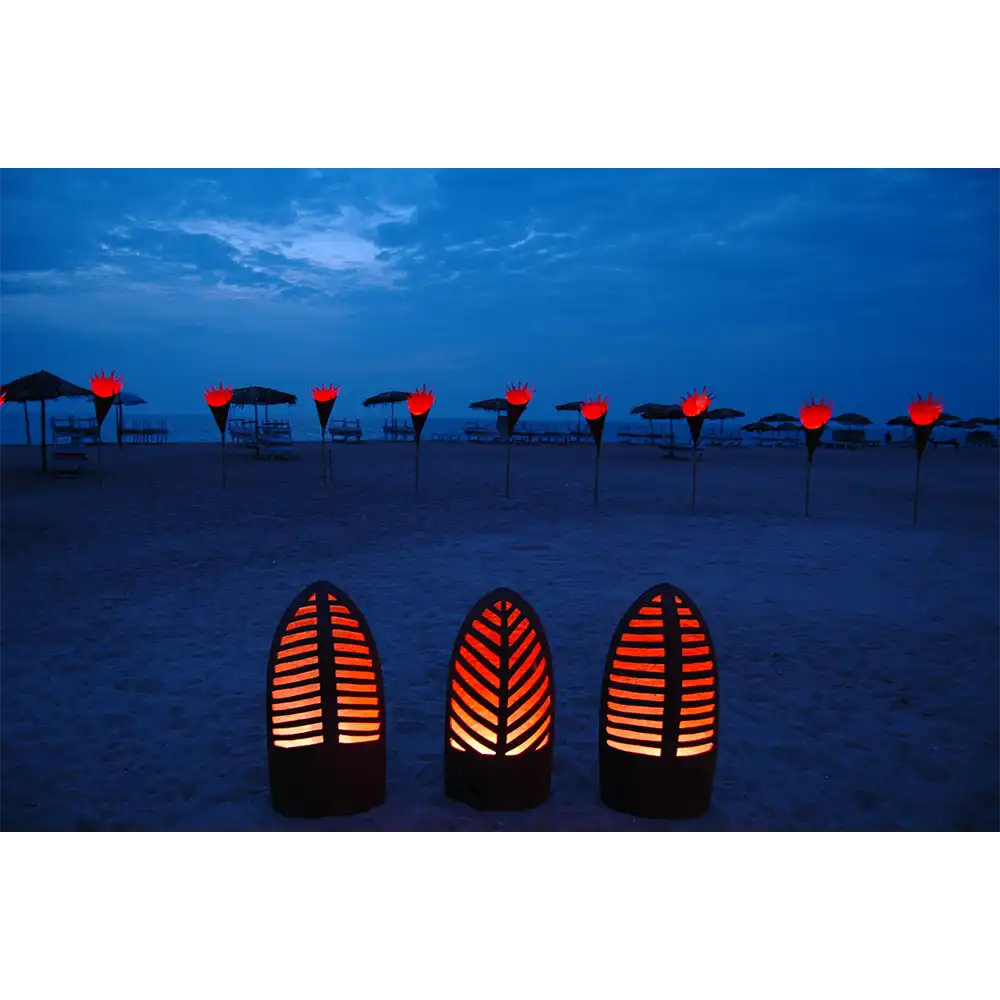
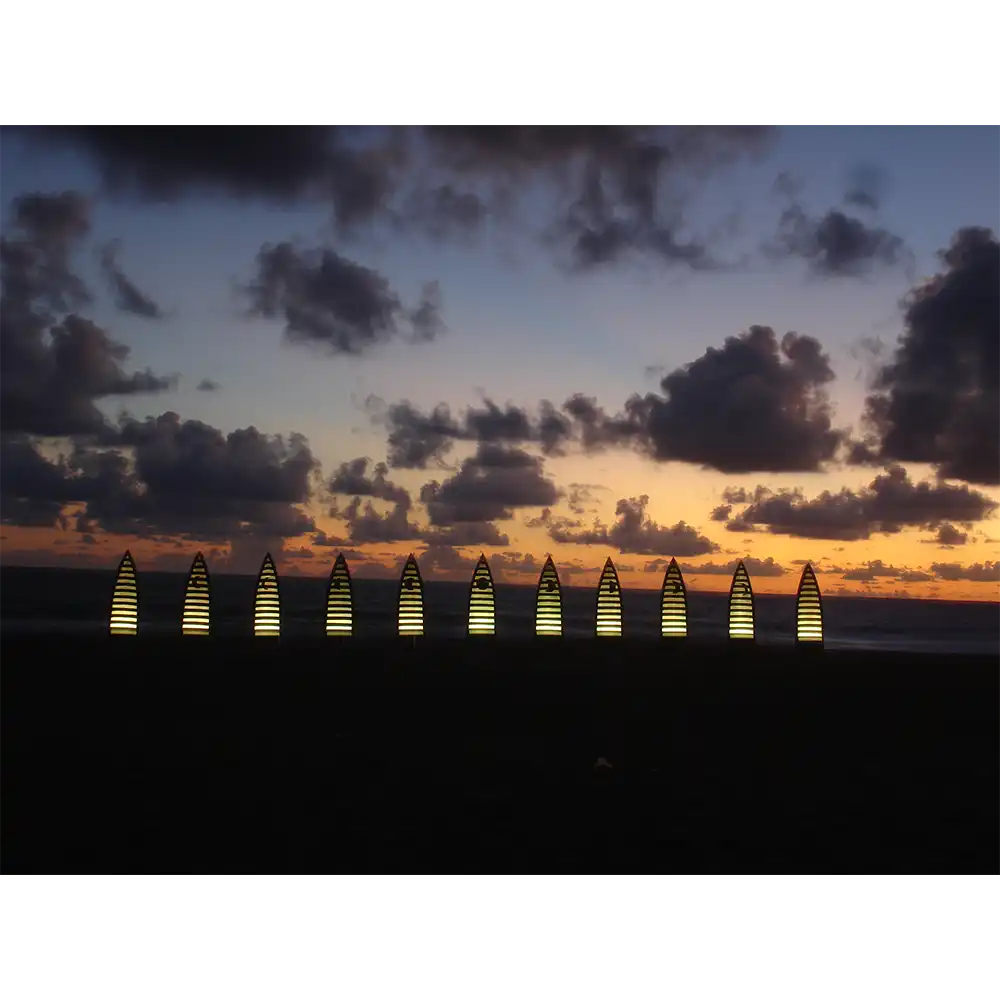
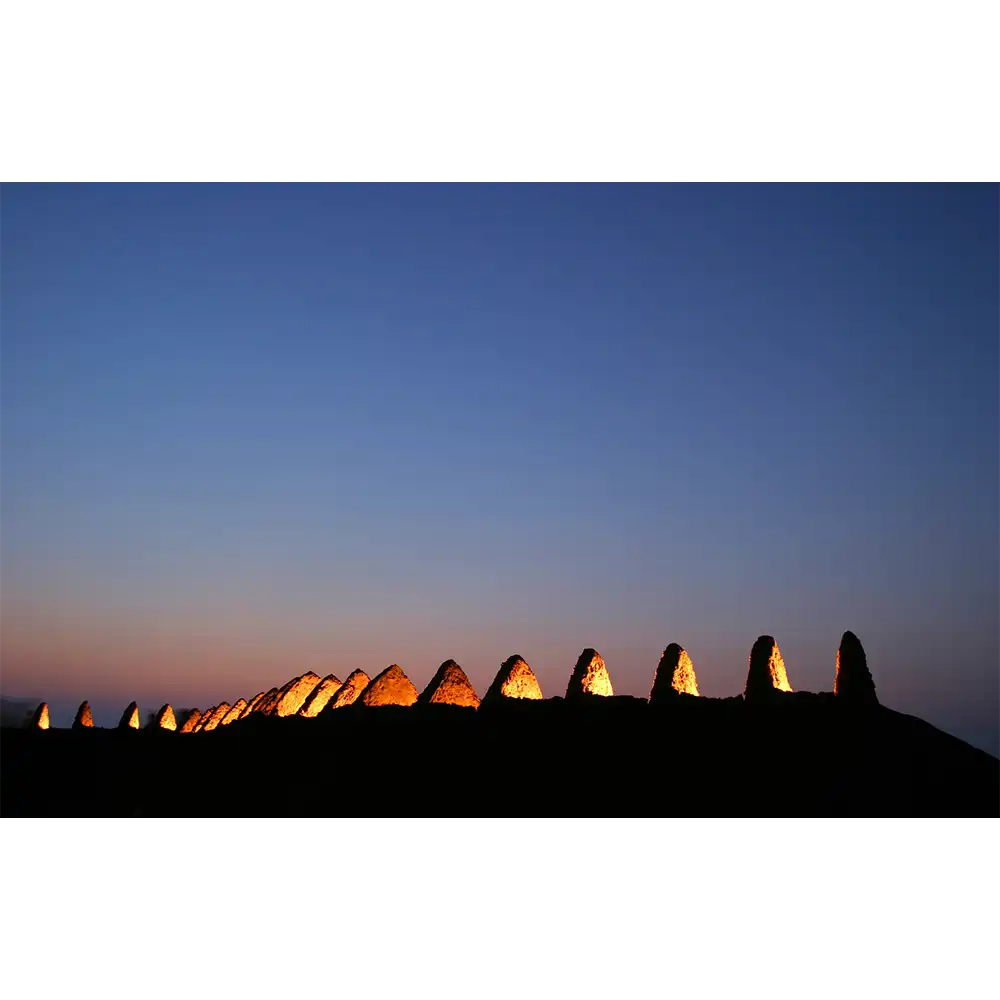
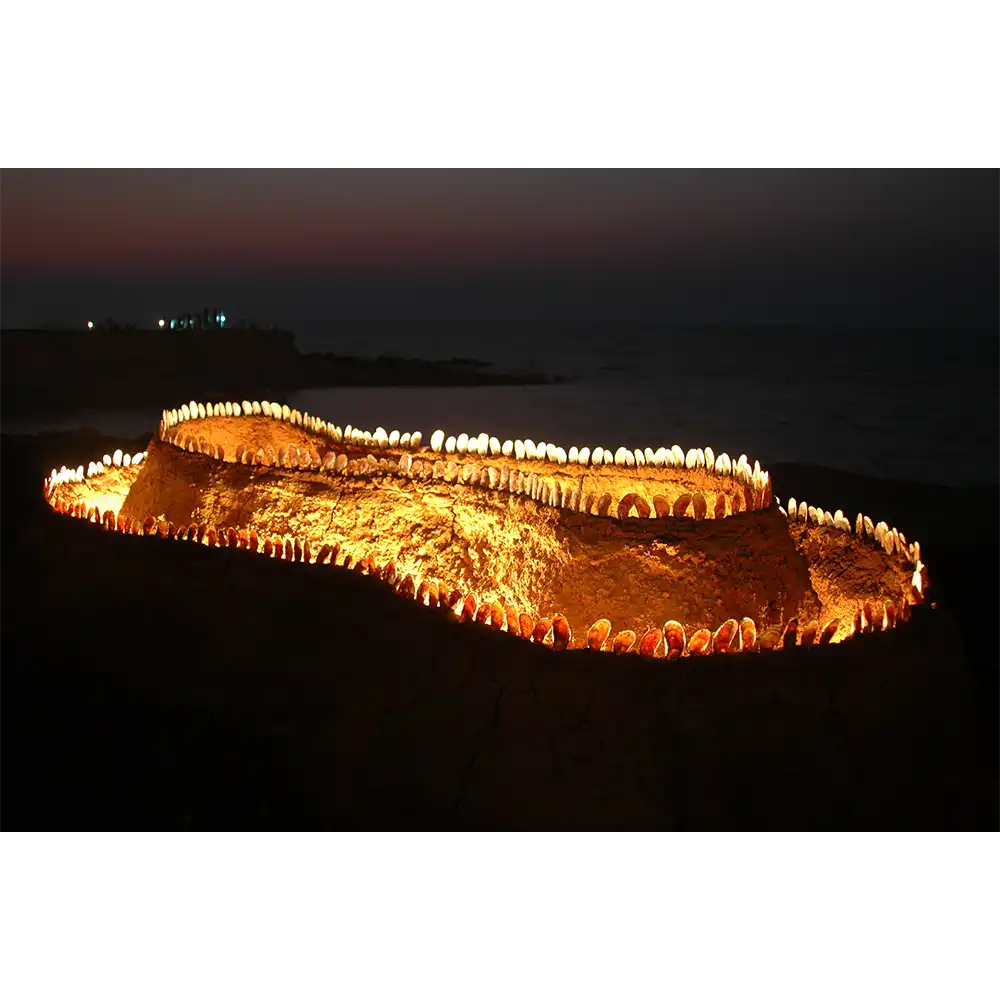

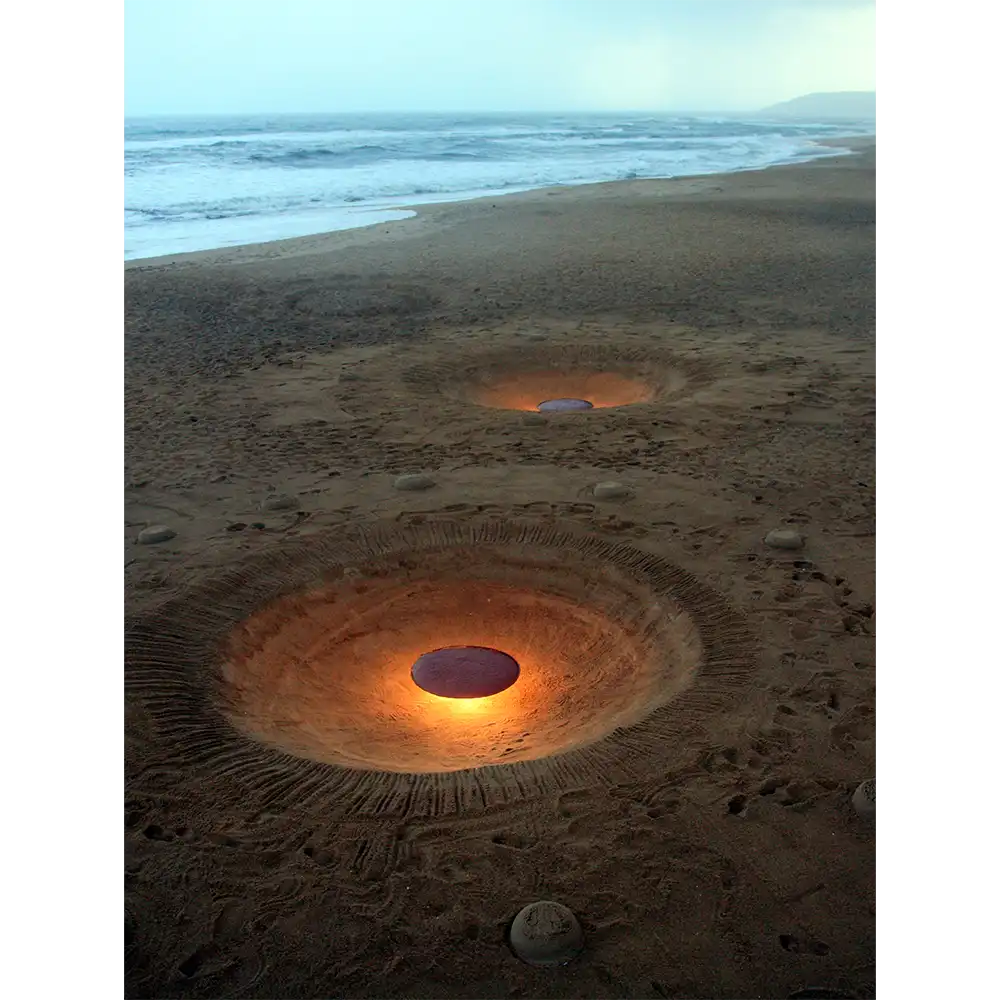
CARPET OF JOY
Littering is a major problem in India. We believe that a lot of public education is needed to get rid of it. Throwing a plastic bottle, a tetra-pack or a chocolate wrapper is an act of violence against Mother Nature and against oneself. To be conscious about not littering is the primary act of citizenship and patriotism. Carpet of Joy is created with about fifty thousand plastic bottles, which were collected from the surroundings. They were painted and converted into flowers. We hope that the Carpet of Joy will inspire every visitor to keep their surroundings litter-free.
